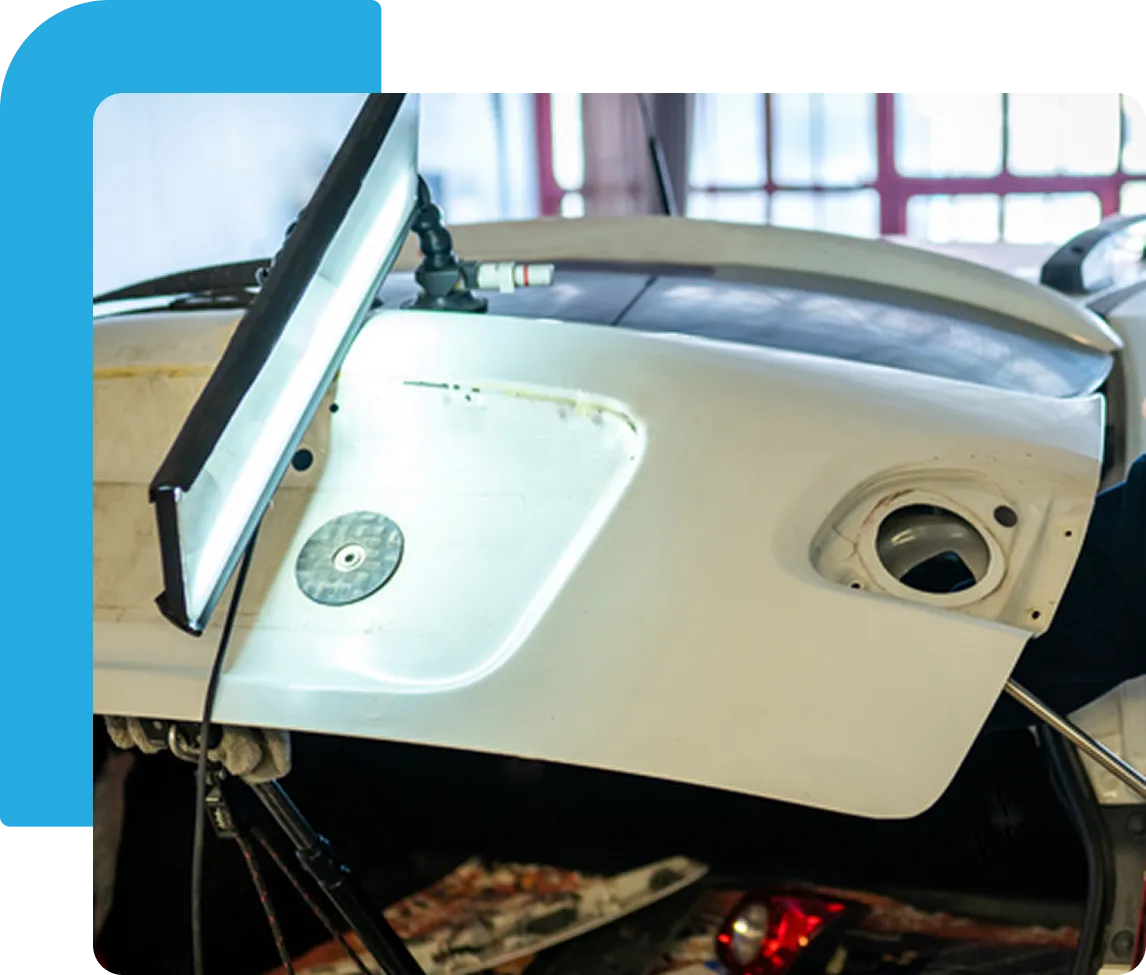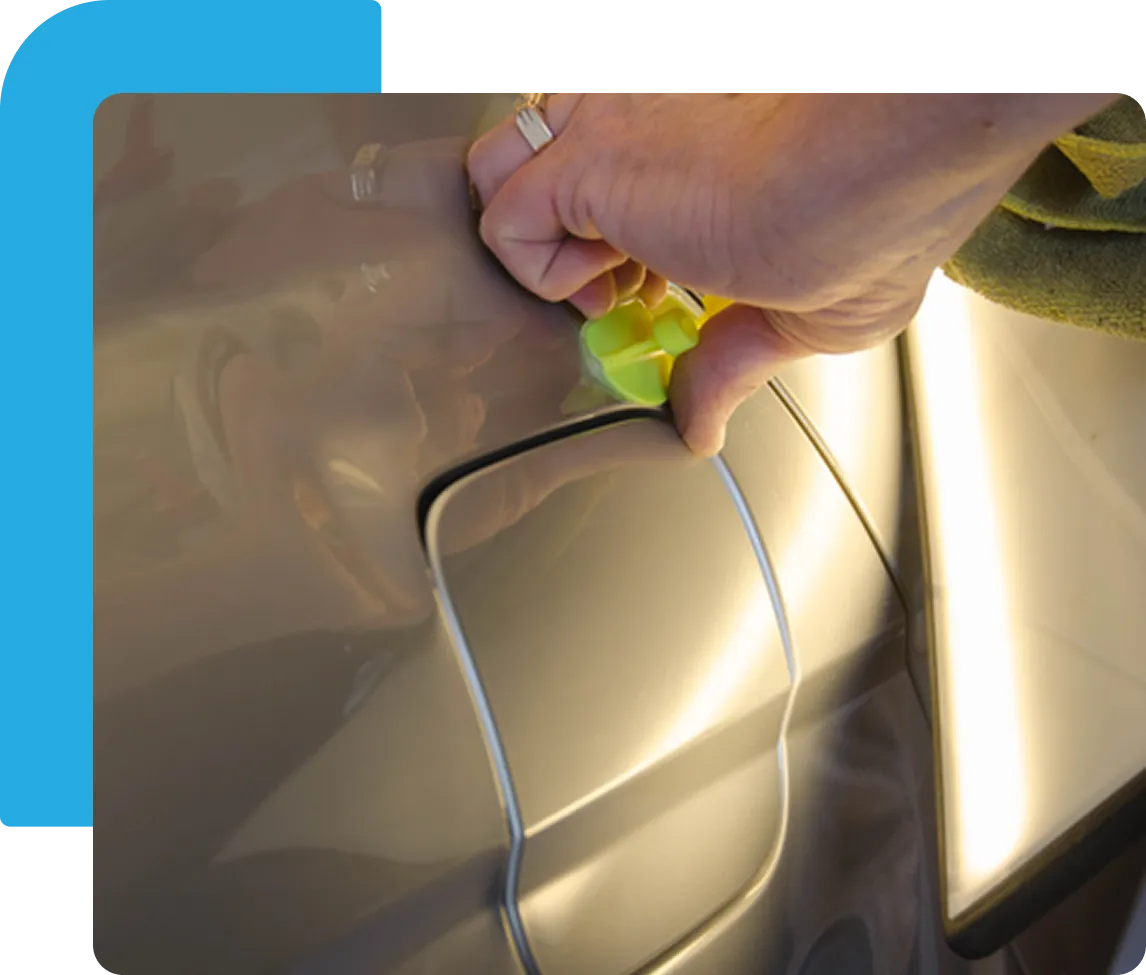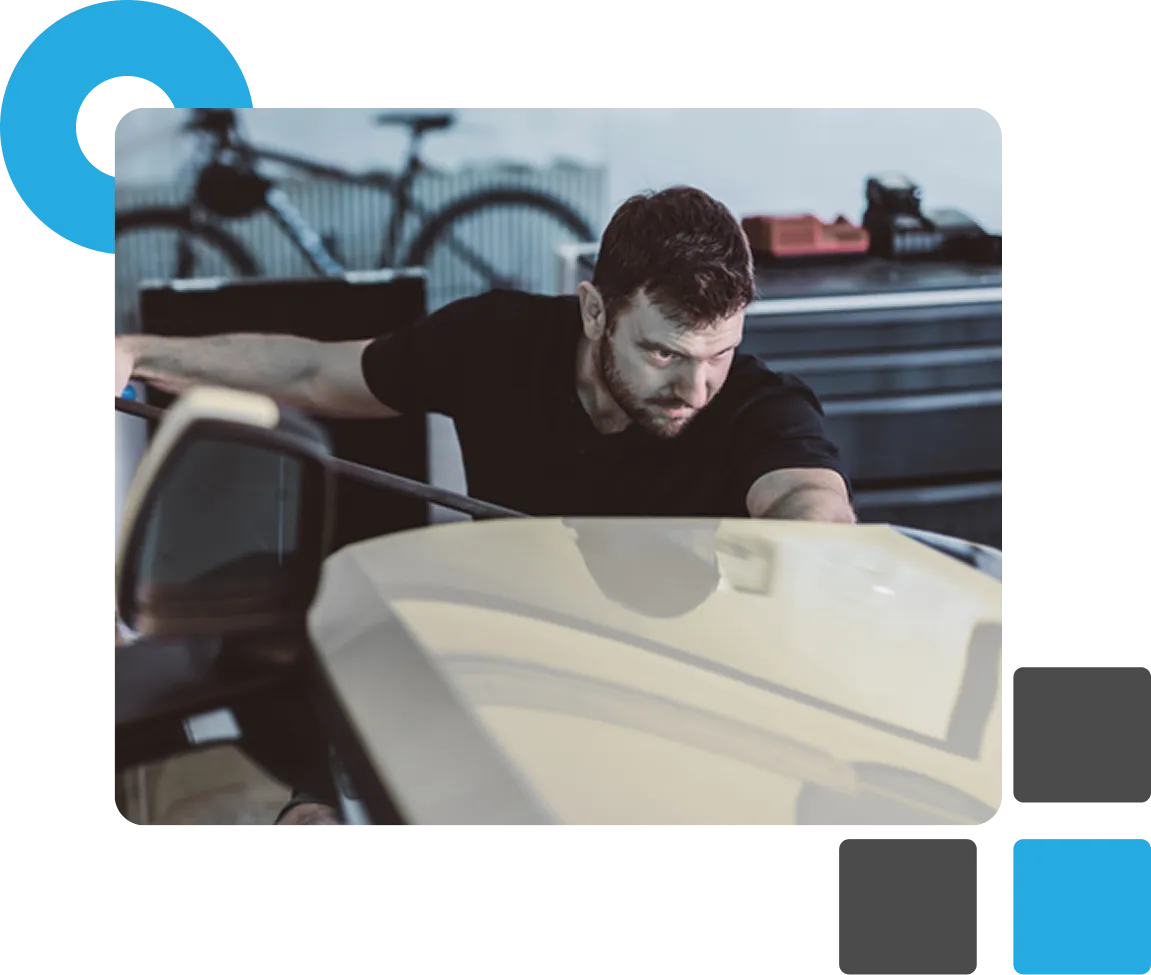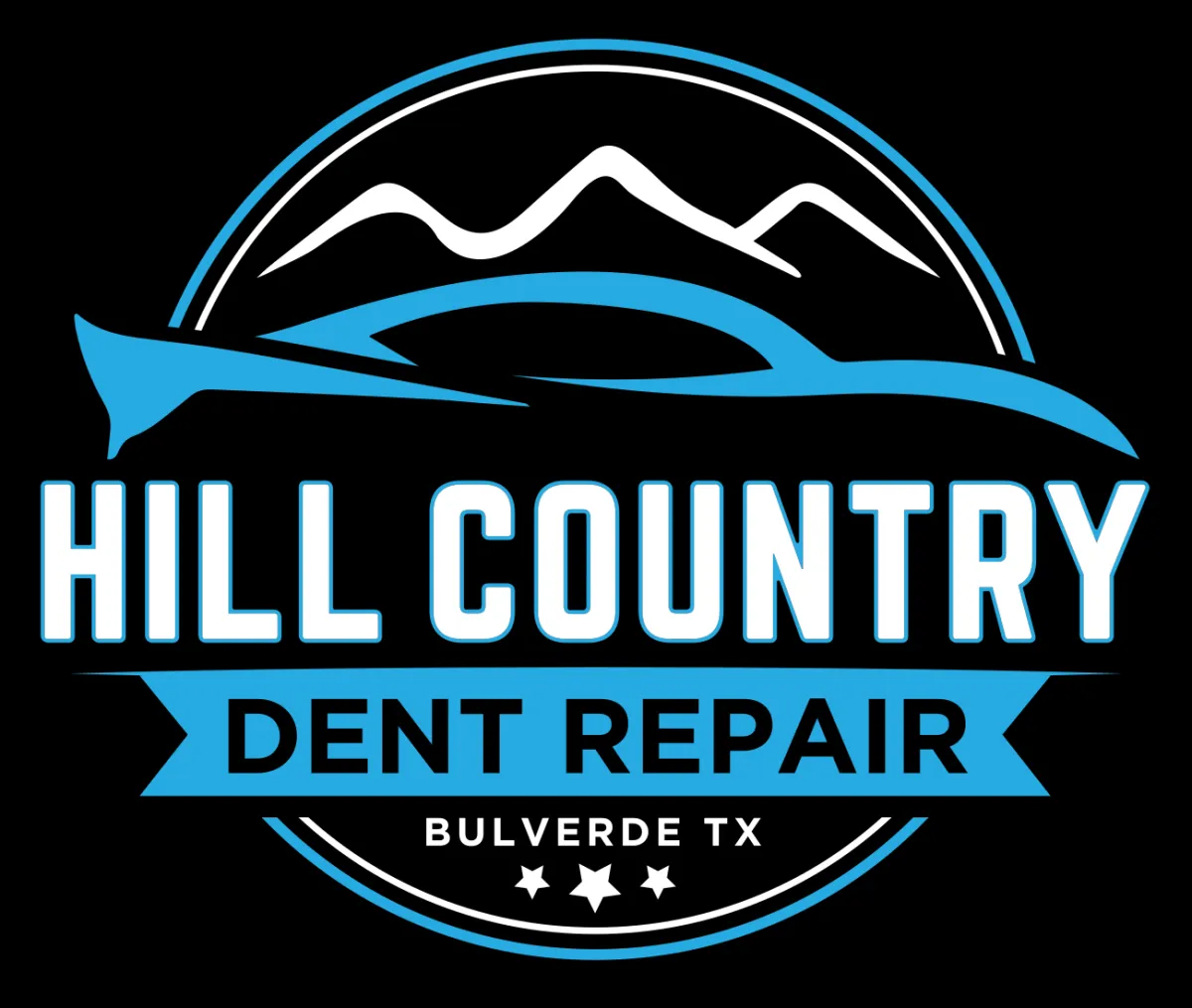Protecting Value After a Storm
HOw Does PDR Affect The Value of Vehicles After Hail Repair?

FSDAVCFEBFEVSDDVFSD

FSDAVCFEBFEVSDDVFSD

FSDAVCFEBFEVSDDVFSD
Why Hail Damage Impacts Resale Value

Even small hail dents can lead to a noticeable drop in resale or trade-in value. When appraisers see exterior damage, it often signals neglect, even if the car is mechanically sound. Buyers use cosmetic flaws as leverage to reduce their offers.
Cracked paint or warped panels raise more serious concerns. These issues suggest potential rust, poor past repairs, or long-term deterioration. Even when the vehicle runs well, visible dents make a bad first impression during inspections or dealership evaluations.
Fixing these problems promptly helps preserve your vehicle’s value and reputation. Paintless dent repair is one of the most reliable ways to do this, especially for hail damage. It restores the appearance without raising red flags about repainting or filler use—two things that typically lower a vehicle’s perceived worth during appraisals or private sale negotiations.

How Paintless Dent Repair Helps Retain Value
Paintless dent repair (PDR) uses specialized rods, tabs, and lights to carefully reshape vehicle panels from the inside. Instead of grinding, sanding, or repainting, the technician works behind the metal to restore its original form. This approach avoids altering the factory paint and helps the vehicle maintain its original appearance, which is an important factor for both appraisers and potential buyers. Keeping the original finish signals the car hasn’t been heavily repaired or modified.
Because no repainting is required, there’s no need to worry about color matching or panel blending. These are common concerns with traditional body repairs, where even slight paint variations can hurt the car’s appearance and resale value. PDR eliminates that issue entirely by preserving the paint, which keeps the car looking consistent and undisturbed. The fewer signs of past damage, the better the trade-in or private sale experience.
Filler and repainting methods, while sometimes necessary, can suggest past collision damage or improper care. Buyers often raise questions about the extent of repairs when they see visual indicators like uneven paint or replacement panels. PDR avoids these concerns by leaving no visible signs of repair. For value-conscious owners, it’s one of the best ways to fix damage without reducing the car’s resale appeal.

Why Insurance Prefers Paintless Dent Rpair
Insurance companies often prefer paintless dent repair (PDR) because it’s less expensive and helps maintain the vehicle’s original condition. By avoiding paint and part replacement, PDR lowers repair costs while minimizing the risk of mismatched finishes that could impact value.
Adjusters also look at how a repair method affects long-term resale. PDR keeps the factory paint intact, which is important when appraising the car later. It leads to fewer flags in damage reports and supports a higher trade-in offer or resale price.
Choosing PDR can also streamline the insurance claim process. There’s usually less back-and-forth, fewer supplemental charges, and faster approval. Since the work is non-invasive, it results in a cleaner repair record—something both insurers and future buyers like to see.

Before scheduling repairs, it’s a good idea for policyholders to check whether paintless dent repair (PDR) is covered under their insurance plan. Most comprehensive auto policies include PDR, especially for hail damage, but it’s best to confirm in advance.
Once approved, working with a shop that specializes in insurance-backed PDR can make the entire process smoother. These shops are familiar with claim documentation, inspection requirements, and communication with adjusters, which helps reduce back-and-forth and delays.
Getting an estimate from a qualified PDR technician also improves the chances of a fast, favorable claim outcome. Experienced pros know how to assess the damage, document it correctly, and recommend realistic repairs that meet both insurance and resale value standards. This balanced approach protects both your time and your long-term investment.
Why Keeping The Original Paint Matters at Appraisal
Factory paint plays a major role in how a vehicle is appraised. During trade-ins or resale evaluations, dealerships and third-party buyers often inspect the paint using tools that detect changes in thickness, texture, or composition. These scanners can easily spot repainted panels, signs of body filler, or previous collision repair—even when it looks fine to the naked eye. These findings often raise flags and lead to reduced offers.
One of the key advantages of paintless dent repair (PDR) is that it avoids disturbing the factory finish. Since the process reshapes the metal from behind the panel without sanding or repainting, it preserves the original paintwork. Appraisers recognize this as a positive, and many buyers feel more confident purchasing a car that hasn’t had paint or filler work. Keeping the body unaltered helps prove the car has been maintained with minimal intervention.
For vehicles under lease, PDR can help drivers avoid costly end-of-lease penalties. For those preparing to sell or trade in, using PDR means fewer issues during appraisal and stronger resale positioning. It meets appearance standards without creating new concerns about the vehicle’s repair history. Overall, keeping the factory paint intact is one of the smartest ways to protect long-term vehicle value.
What to Expect from Mobile Dent Repair Services
A mobile PDR appointment typically starts with a thorough inspection of the vehicle. The technician checks each panel for accessibility, examines the condition of the paint, and counts the number of dents caused by the hail. This step helps determine if the damage is suitable for paintless dent repair.
If the dents meet the criteria, the technician uses specialized tools behind the panel to gradually reshape the metal. The process avoids sanding, body filler, or any type of repainting, which keeps the original finish intact. Depending on the severity and number of dents, most appointments are completed within a few hours.
Smaller repairs—like isolated roof or hood dings—are often finished even faster. Mobile PDR eliminates the need to leave your car at a shop or arrange additional visits. With proper access and lighting, the entire process can happen at your home or workplace in a single visit.


Mobile paintless dent repair services do more than just save time—they allow drivers to get hail damage fixed without rearranging their entire day. Whether you’re at home or at work, the technician comes to you and performs the repair on-site. This convenience is especially valuable when traditional body shops have long wait times or require multiple visits.
However, not every location is ideal for mobile repairs. If the tech arrives and finds the area too dark, cramped, or exposed to harsh weather, they may recommend rescheduling. Good lighting and space are essential for delivering high-quality results, especially when working on multiple dents or larger panels.
To prepare for a mobile appointment, try to provide a shaded area like a garage or a wide-open driveway. These conditions help ensure the technician has proper access and visibility. Better conditions lead to better results and a smoother, faster repair process.
How to Maintain Value After Hail Damage Repair
To protect your vehicle’s value after hail damage, take action quickly. Begin by photographing every affected panel in good lighting. These photos are useful when filing your insurance claim and can help streamline the approval process. The more thorough your documentation, the fewer delays you'll face when it’s time to move forward with repairs.
Next, be sure to request a detailed estimate and save all receipts once the work is complete. These records play a critical role if you plan to sell or trade in the vehicle later. They show that the damage was handled professionally and not ignored, which builds trust with dealerships and private buyers alike.
Selecting the right repair method is just as important. Paintless dent repair is often the best option because it doesn’t involve sanding, paint, or filler—preserving your factory finish. Visible damage, rust, or mismatched paint can drag down value. Acting early and documenting everything helps maintain your car’s appearance, resale potential, and credibility with future buyers.

Hill Country Dent Repair
Mobile Dent Repair & Hail Repair
Stay Up-to-date With Our Content
Subscribe to learn more about our mission!
Stay Up-to-date With Our Content
Subscribe to learn more!
Contact Info
Service Hours
Social Media
Mon - Fri: 8:00 am – 5:00 pm
Saturday: Closed
Sunday: Closed
Home
Services
Service Areas
Blog
About
Contact
Contact Info
Service Hours
Mon - Fri: 8:00 am – 5:00 pm
Saturday: Closed
Sunday: Closed
Social Media

Licensed, bonded, & insured
©2025 Hill Country Dent Repair
Powered by: Customers.Plus